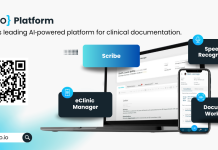The digital transformation occurring in workspaces is a surging movement reinventing business as we know it – redefining offices, business strategy, and work culture
To prevail, you must think of technology as indispensable and a strategic competency that will take your company/organization to the next level revolutionizing how you perceive work. So what is digital transformation, and how do you incorporate it into work culture?
Digital transformation is using technology to leverage business and improve employee functionality. The web has changed how we perceive and do things in many ways—transferring the work culture from clocking in and out into an easier dynamic.
The shift to remote working made it abundantly clear that there had to be an imperative change in the work environment, making relatability and conformity an easier process.
The benefits of digital transformation
Hybrid work is the art of combining an office-like setup while working from home. It allows the employee to work from home while maintaining efficiency. In previous years online work came with a few hurdles, communication, conferences, and collaboration. Luckily such problems can be averted with the use of technology.
- Reduced costs: using digital transformation to improve asset efficiency, support employee productivity and production costs, and provide friendlier customer service. You can cut on energy use, opt for better options and collect easier data.
- Reduce environmental impact: the world is heading towards a greener, eco-friendly space. Customers show a higher interest in companies whose message aligns with their morals. The cost of paper-based processes to the environment is higher than many realize. With 42% of timber being harvested annually by the paper industry—that’s 30 million acres of forest routinely cut down—our paper use creates a damaging level of demand. Deforestation reduces tree cover. But online data and clouds can help eliminate damage.
- Affective communications: Apps like zoom and Google Meet have drastically changed how conferences are held. It has lessened the need for a psychical presence or catching a flight to get to a meeting. Instant messaging expedited feedback and exchange of information.
- Improving product and service quality: Having a solid business plan is important, but creating a product, selling it, and determining customer service is the differentiator factor in any market.
Empowering remote workers
- It’s all about staying connected. Work culture nowadays relies heavily on maintaining connections and being in the loop. Storing data, purchasing servers, and securing it became easier as technology continued to develop. All it takes is a computing cloud, and your employees can feel secure as they know their information is safely kept and won’t leave the company without a data trail to track it. The cloud can be used for data backup, disaster recovery, email, software development, data analysis, and customer-facing web applications.
- Automation can assist with all sorts of work-related solutions. It promotes efficiency and facilitates work—there is no need for supervised machinery to detect errors; comprehensible reports are automatically sent.
- Employees can spend less time tracking products, paperwork, and conducting surveys. Once automated, employees can shift their attention to more important tasks leaving everyday workflow to the machines.
Giving more flexibility to remote employees and managers due to digital tools
With built-in home offices, attendance and punching in the clock were virtually impossible until digital transformation became a part of the working environment and work culture.
Making Online payslips, leaves and absence management, time and attendance management, digital document management of employee labor files, exchange management of payroll and HR, automated reporting, business intelligence reporting, and archive data platform are all now possible solutions thanks to digital technology.

Remote work promotes a digital mid-set
Developing new skills is no easy task, but it is a needed action for digital transformation. Employees should be able to use web tools to create a better work example.
Psychologists identify mindset as a way of thinking and orienting to the world that shapes how we perceive, feel, and behave.
However, a digital mindset is an approach that employees develop using technology. Digital working is no longer seen as a workaround solution but as an important enrichment of daily working processes and work culture.
Taking more personal responsibilities instead of management control
Digital technology has certainly paved the way for adopting a new mindset. With new tools and assisting technology, leaders now feel free to allow employees to participate in bigger roles. It has enabled employees to use their potential to feel more included as they foster their curiosity.
The impact of technology is considerable, and cultivating such assets can be a key factor in how you elevate performance. There are many benefits to reap, and it is up to you to determine whether technology will be an aiding factor or if you will fall behind.
Be initiative and implement such change in your workforce. It is more than mere electronics; it is about the comfort of those who dedicated their lives to the success of their company. Begin your digital transformation and spread the inspiration. Investing in technology will save you a lot in the long run.
Don’t miss out and be the victim of your demise. Plasticity equals ability which leads to stability. Principal Research Scientist George Westermann said: “When digital transformation is done right, it’s like a caterpillar turning into a butterfly, but when done wrong, all you have is a caterpillar.”











